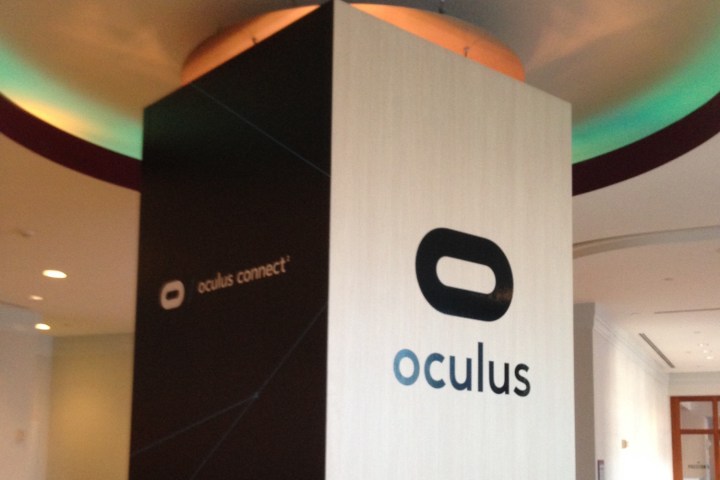
Stephanie Lue began by observing that “left to their own devices, engineers will continue to iterate, iterate, and iterate.” Finding the right compromise is key, and Oculus believes it has been successful in doing so because of its non-linear management structure. Rather than forcing each employee into a rigid role and process, everyone involved with the hardware development of the Rift was encouraged to work together.
It was an industrial designer, for example, who figured out how to cradle the Rift’s lenses in fabric that allows adjustment, yet also provides rigidity. Combined with a gear mechanism, this lets the user adjust the Rift’s inter-pupillary distance, or distance between pupils. Proper calibration is needed for virtual depth perception. Normally an engineer would be assigned this task, but letting another willing employee step in led to a creative solution.
Creative use of fabric is, in fact, integral to the Rift. The headset is complex, and uses IR lights to help with head-tracking and a microphone for voice input, but Oculus didn’t want these devices protruding and at risk of damage. To solve that, fabric coats much of the exterior. It’s a very specific material, so specific that the company had to scour the globe to source it.
Using fabric makes the headset lighter, more attractive, more comfortable and breathable, so it doesn’t cause the user to sweat, and cools the internals.
Oculus is doing everything it can to foster a strong VR eco-system through great hardware.
Caitlin Kalinowski also spoke extensively of the straps and headset, all of which are designed to maximum comfort. The straps themselves are balanced to keep pressure at the rear of the device, rather than the front, where it would be uncomfortable. A similar approach is taken to the audio experience, where Oculus uses a “four bar linkage” to keep pressure low without sacrificing range of articulation.
Kalinowski and Lue obviously felt proud of their accomplishments so far, and were happy to take questions after their session was over. Kalinowski went so far as to say she doubts most hardware companies can rival the rate of innovation Oculus’ has enjoyed over the last year.
The session did at times take on the vibe of a sales pitch, meant to entice developers. This came across strongly as the talk wound down and Kalinowski offered assurances that Oculus is doing everything it can to foster a strong VR ecosystem through great hardware. After all, if no one buys a Rift, developing software for it will be a moot point. It’ll be interesting to see what Oculus has up its sleeve at the upcoming keynote — and how close the device, which is slated for Q1 2016 release, is to being finalized.

